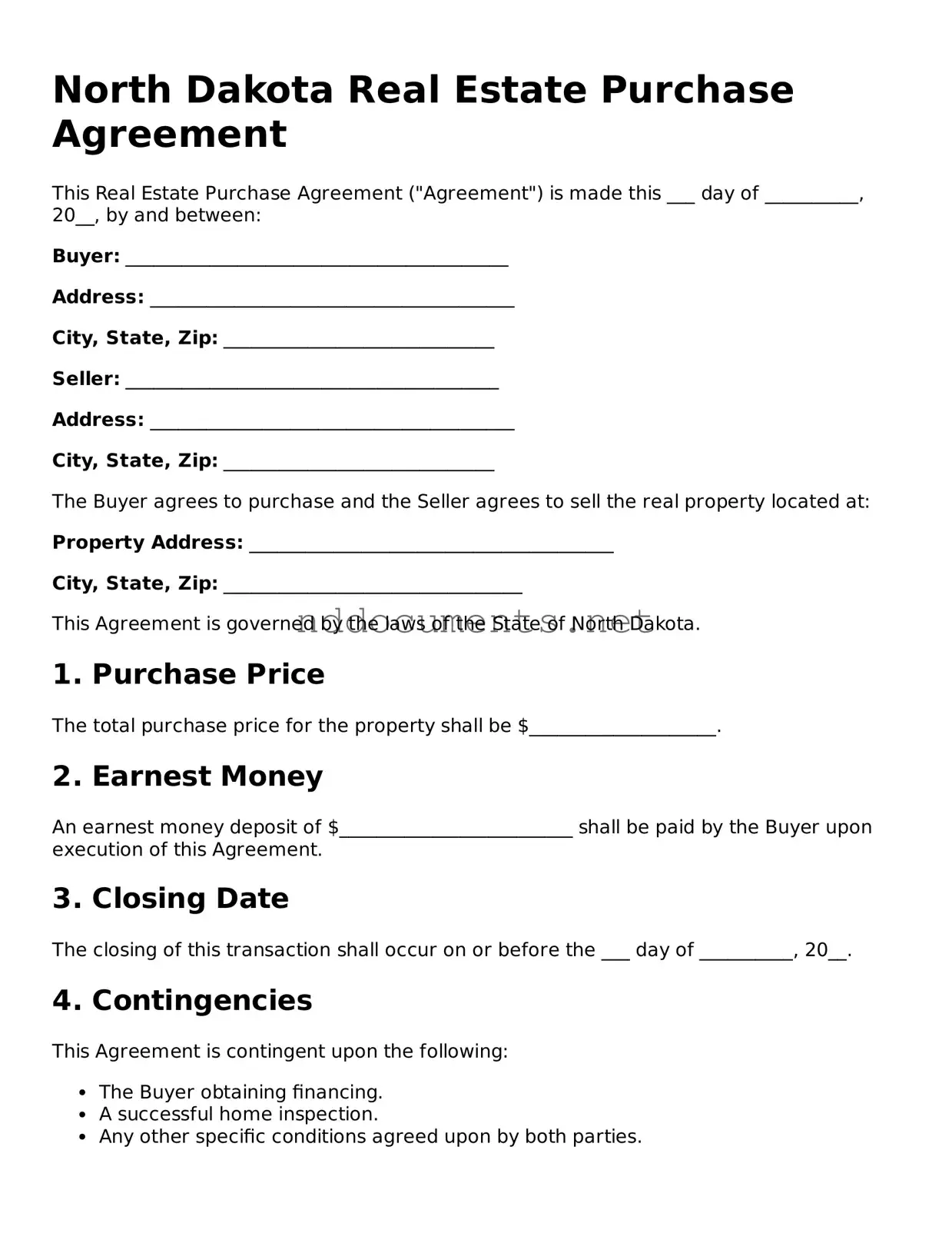Fillable Real Estate Purchase Agreement Document for North Dakota
The North Dakota Real Estate Purchase Agreement form is a legal document that outlines the terms and conditions for the sale of real property in the state. This form serves as a crucial tool for both buyers and sellers, ensuring that all parties understand their rights and obligations. By clearly defining the details of the transaction, the agreement helps to facilitate a smoother real estate process.
Make Your Document Online
